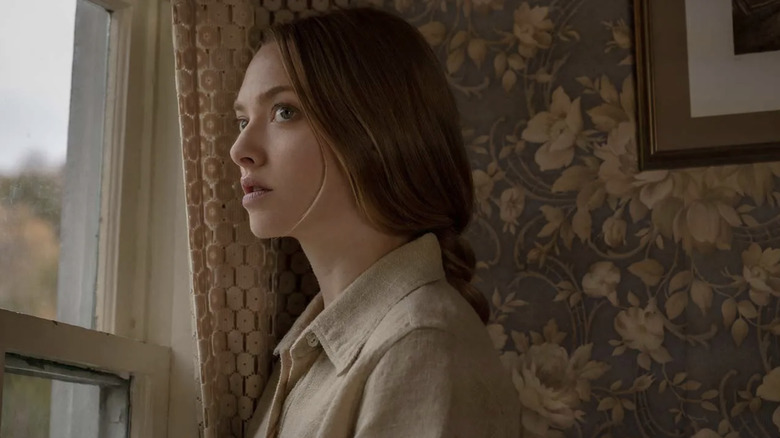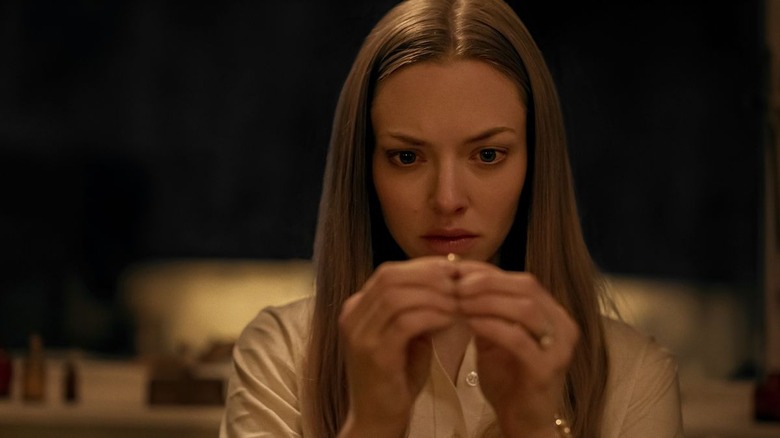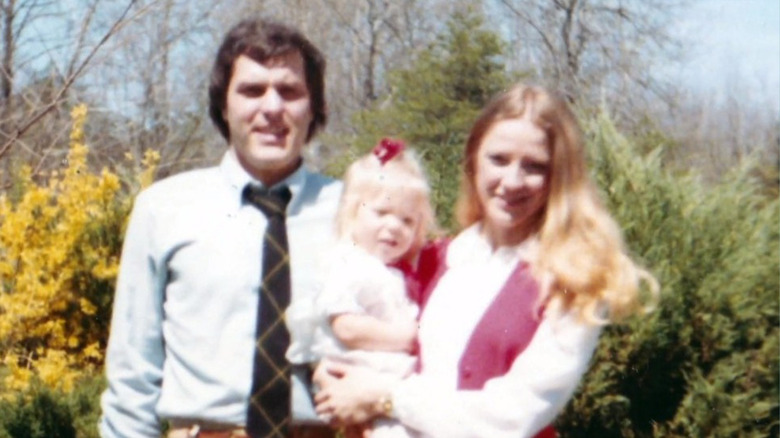The Terrifying True Story Behind Netflix's Things Heard & Seen
The Amanda Seyfried-starring Netflix horror movie "Things Heard & Seen" may have been obliterated by critics and audiences alike, but the story's blending of a traditional ghost story and a true crime tragedy has fans fascinated with how the film came to be. Based on the Elizabeth Brundage book "All Things Cease to Appear," the tale centers on a woman named Catherine Clare who moves to a small rural town with her husband and daughter who begin to suspect their new home may have been the site of some gruesome events. The family begins to witness supernatural entities throughout the house, going so far as to conduct a seance to try and get to the bottom of the hauntings. However, things take a turn for the damned when Catherine realizes that the true horror in her home is still among the land of the living.
"Things Heard & Seen" has been frequently compared to Robert Zemeckis' "What Lies Beneath," but the story's origins are rooted in real-life events that happened to or near author Elizabeth Brundage. Yes, this means that Brundage claims to have felt the presence of a ghost in her own life, which partially inspired her to write her novel. As if that didn't sound unsettling enough, the story's devastating climax is also based on a true event, a horrifying cold case that she once read about and hasn't been able to shake.
Here's the terrifying true story behind Netflix's "Things Heard & Seen."
The ghostly tale
According to Elizabeth Brundage's "Behind the Book" section on her website, the ghostly elements of "All Things Cease to Appear" were inspired by her family's personal experiences with the supernatural. Sometime in the late 1990s, Brundage, her husband, and their two children rented a house near historic Malden Bridge, New York with a large yard, wild onion and sage sprouting up, and a beautiful front porch. As they examined the new home, they noticed a Dutch door, the kind that splits into two separate sections that can be opened independently. The door was locked, but then suddenly, the bottom half opened on its own. Brundage and her daughter crawled inside the house and began to explore, thinking they had found their dream lodging.
But then Brundage's daughters began telling her about the ghosts of three little girls who had died in a fire roaming the house. "They knew details that seemed beyond their ability to fabricate, including the names of the ghosts, and historic details about an old mill down the road with tainted water," Brundage wrote. For months, there were unexplainable events, and she wrote that she often could "feel" a presence that she couldn't see.
But when the family eventually moved out at the end of the season, Brundage found the unimaginable. "I opened a cabinet in the built-in corner cupboard of the dining room — for some reason I had never opened it before — and discovered three pairs of children's shoes — little brown leather boots, probably stitched together in the early 1800s, that would perfectly fit those little girl ghosts, matching the ages that my daughters had described." She took the shoes with her when they left, believing it wouldn't be right to abandon them in that big house.
The real-life tragedy
"In this novel, the foundation is made of the bones of a dead woman, a woman I had read about in a newspaper once, whose murder has never been solved," wrote Brundage. As she would later tell Time Magazine, the unsolved murder is the 1982 case of Cathleen "Cathy" Krauseneck. Shockingly, the cold case of Krauseneck was seemingly solved in February of 2023, over 40 years after her murder. When Krauseneck's body was first discovered, she was in bed with an ax lodged in her head. The story was even the recent subject of an episode of "People Magazine Investigates" titled "Brighton Ax Murder."
Cathy's husband Jim was the one to find her after coming home from work, and their three-year-old daughter who was at home during the time of the attack was luckily unharmed. Investigators suspected Jim, but without any hard evidence, they couldn't prove it. The case went cold. Jim moved away with his daughter and eventually remarried. DNA testing didn't exist back in 1982, but it does now. After extensive testing, DNA evidence was able to prove that there was no other DNA present in the home. There was no intruder, indicating a classic case of domestic homicide. Jim Krauseneck was found guilty by a jury of second-degree murder but his daughter, new wife, and immediate family all believe he's innocent. As of publication, he has plans to appeal.
Incorporating elements of real-life murders often posits an ethical conundrum, but both the book "All Things Cease to Appear" and the film "Things Heard & Seen" take enough creative liberties to keep the story firmly in the world of fiction, similar to the way "The Black Phone" is inspired by figures like John Wayne Gacy without ever crossing the line into exploiting real-life tragedy for entertainment value.


